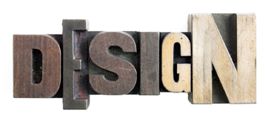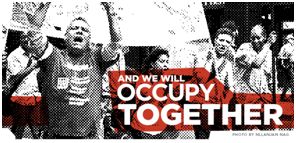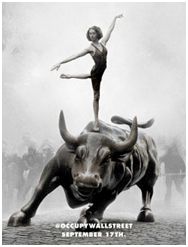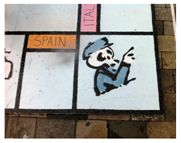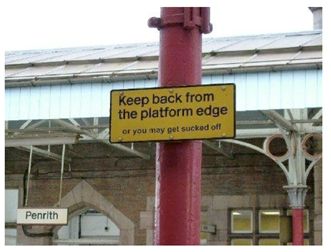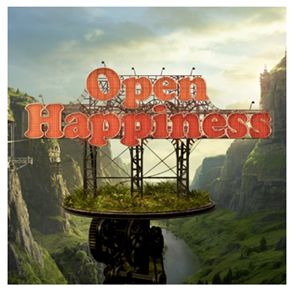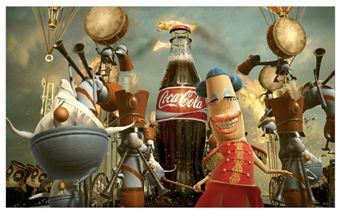![]()
You are welcome to share your thoughts on this article written by Greg Taylor, Director of Brand Provocation at Elmwood, London
Which comes first: the image or the word? I work in a very visual industry and am a bit nervous about discussing the power words versus images— but anyway, here goes!
Much is written about “design thinking” these days. As a result, design is being taken more seriously as a means of strategic direction, not just for brands but for the entire business behind it. By thinking like a designer, it’s possible to observe what people need, want, love or hate, and then come up with early design ideas that you can put in front of an audience, get some feedback and then evolve.
Great designers do this brilliantly because they’re good at thinking with their eyes. They can see things that others just don’t. But what points their eyes in the first place? And what keeps the idea alive during the creative process? Experience suggests that it’s stories that spread the insight— and the stickier the story, the greater the impact. This means words have a crucial role to play in bridging the gap between insight and creative execution. As 1930s writer, Pearl Strachan Hurd once said, “Handle them carefully, for words have more power than atom bombs.”
Words drive the cause
“I have a dream”, “Think different”, “Liberty, Equality, Fraternity” —just three phrases out of hundreds demonstrating how well-chosen words capture their instigator’s ambitions. These phrases helped helping Martin Luther King, Steve Jobs and the French nation change their respective worlds.
More recently, the word “Occupy” has fired people’s imagination. For anyone who’s not been on the planet recently, Occupy Together is a hub for all of the events springing up across the world in solidarity with Occupy Wall St. Inspired by the uprisings in the Middle East, what began as a non-violent protest on September 17th with the goal of ending the greed and corruption of the wealthiest 1% of America, has become a worldwide phenomenon.
“Occupy” even inspired political pro-activist artist Banksy to design a three-dimensional adaptation of a Monopoly Board with Mr Moneybags portrayed as a down and out beggar. On the board there are large-scale models of the playing pieces, including the sports car (to represent bankers) and a red plastic house with a Tox tag sprayed onto it. This is a reference to the jailed London Graffiti artist TOX and also a visual play on the toxic mortgages that kick-started the current recession. The work of art is valued at over £400,000 and has already become a tourist attraction.
Not all words are created equally
Whilst it’s easy to show how words throughout history have been used to motivate people and that words inspire us in the creative industry to design amazing things, it’s also important to recognise that some words are better than others. In order to translate design thinking into action, we need to work harder to find words designers can draw.
It’s all well and good saying you want your brand to be “inspiring” but ask someone to draw it — not so easy. “Inspiring”, you see, is a bit of a fluffy word. It’s imprecise because it means many things to many people – instead, it’s better thought of as an encouraging call to action. Yet how often does “inspiring” pop up in creative briefs! Better to use “spark”, “trigger” or “infuse”—these are all words that can be drawn, which are more useful in creating an effective design strategy. It’s not enough to know that words point the creative brain; we have to be aware that some words are better pointers than others.
21st century story making
If some words are more effective at bringing design strategy to life, how do we make these words work in a way that’s appropriate for the 21st century? Brands can connect with their audience in an increasing number of ways. We don’t just need to find the words that make the story compelling — we have to also think about how to share this story across multiple communication platforms.
Which is why the hot new blingo word in brand is “transmedia”. The basic premise of transmedia is rather than using different media channels to retell the same story, you use them to communicate different parts of the story. Its success relies on fragmenting a story and making each platform do what it does best which, in turn, makes for a richer, longer lasting story. This means that words and the ability to storyboard and create an engaging narrative becomes even more important to how designers go about their business. It’s no longer enough to think that an image is worth a thousand words. In a transmedia world, what lays behind that image needs to be broken up and re-assembled into different formats through different technologies in a way that heightens interaction.
The debate is still raging as to how consumer brands can be as truly transmedia as, say, a media owner like Time Warner with the multi-platformed Potter. However, Coke is certainly having a go with their Happiness Factory campaign. They’ve created a rich story around the idea that their vending machines have a whole world existing within them, known as the Happiness Factory. The campaign has seen the production of all the usual campaign activity: a website, some TV ads, etc, but also things like a co-created music track.
See the ad at http://tinyurl.com/cpxpmm
The story kicks off with the ‘Yawnbusters’ ad and seeds a trademark energetic five-note Happiness Factory whistle. A track is developed on the back of this— a unique collaboration featuring the diverse talents of Cee-Lo, Patrick Stump from Fall Out Boy, Brendon Urie from Panic at the Disco, Travis McCoy from Gym Class Heroes and P-Diddy’s latest protégé, Janelle Monae.
The story continues through the Happiness Factory gaming website, where Coke fans can explore the fantastical world inside the Coke vending machine through a graphically rich and engaging online gaming experience. Adopting the role of a worker in the Happiness Factory, a player is entrusted with a list of tasks from running on top of a coin down the mountain to a high speed journey through the ice world of the Penguins to directing the orchestra to the rhythm of the «Open Happiness» song. Through the new website, Coca Cola has pushed the limits of available technology to bring visitors amazing richness of detail to truly immerse themselves in the world of the Happiness Factory. Time will tell how successful they are in keeping the story alive.
From design thinking to story thinking
Finally, a confession: where I work, we have writers built into the creative team, so I guess I’m somewhat biased. Great brand stories are driven by great narrative — it’s not rocket science— and storytelling is something we’ve been doing ever since we first strolled out of the cave. Today though, we have the opportunity to create a different type of story with far-ranging possibilities. Perhaps instead of “design thinking” we should practice more “story thinking”.
About the Author

Greg Taylor became founding partner in global brand design consultancy Elmwood in 1989. Now Director of Brand Provocation, Greg is the creator and facilitator of Step Change™, Elmwood’s strategic tool for moving ideas forward. Clients include ASDA, Wal-Mart, Arla Foods, BBC, COI (Defra and DfT), Cable&Wireless, Comic Relief, Debbie & Andrew’s, Durex, Glasgow 2014 Commonwealth Games, McCain, and the Met Office.
